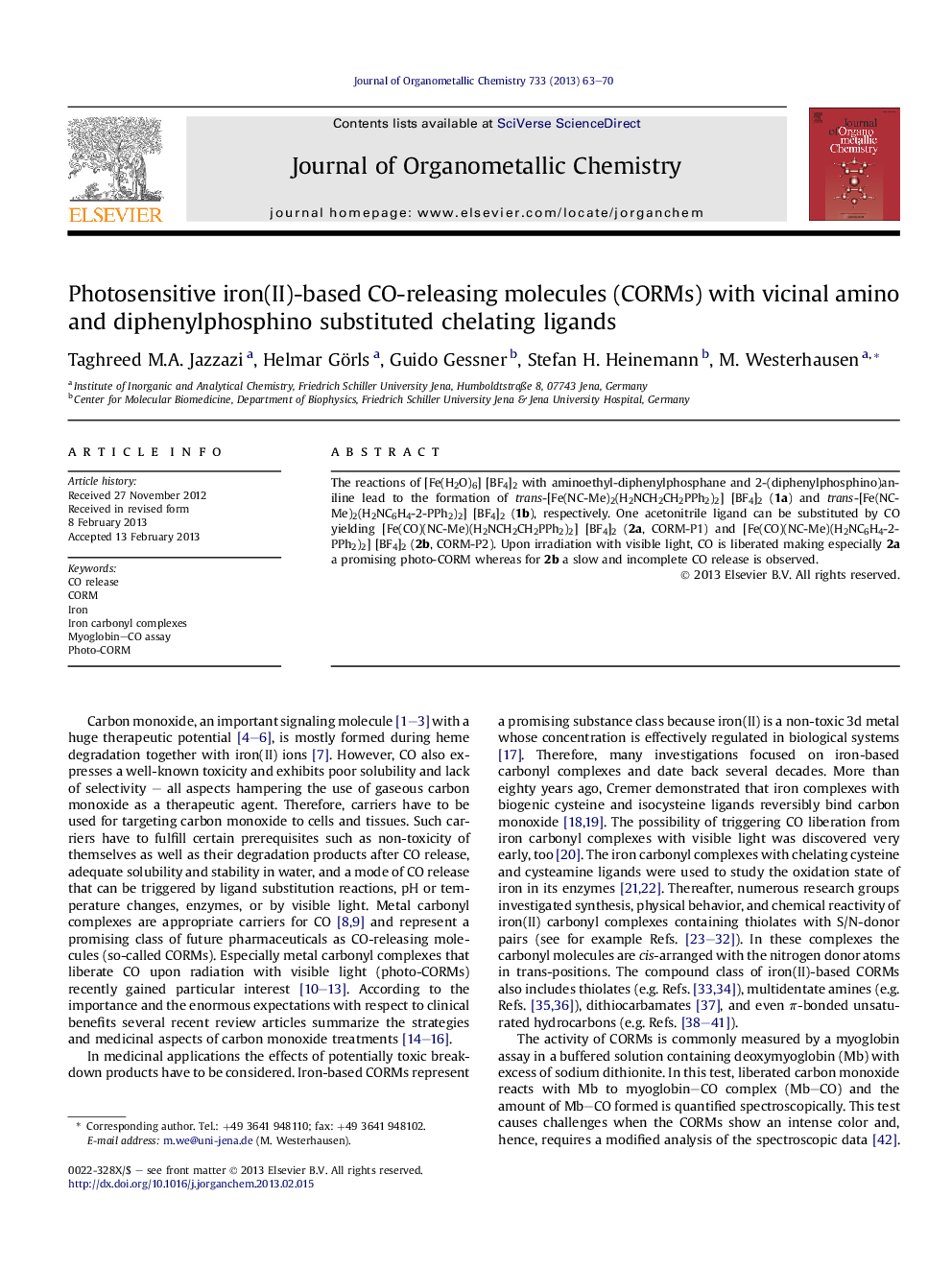| کد مقاله | کد نشریه | سال انتشار | مقاله انگلیسی | نسخه تمام متن |
|---|---|---|---|---|
| 1321849 | 1499905 | 2013 | 8 صفحه PDF | دانلود رایگان |

The reactions of [Fe(H2O)6] [BF4]2 with aminoethyl-diphenylphosphane and 2-(diphenylphosphino)aniline lead to the formation of trans-[Fe(NC-Me)2(H2NCH2CH2PPh2)2] [BF4]2 (1a) and trans-[Fe(NC-Me)2(H2NC6H4-2-PPh2)2] [BF4]2 (1b), respectively. One acetonitrile ligand can be substituted by CO yielding [Fe(CO)(NC-Me)(H2NCH2CH2PPh2)2] [BF4]2 (2a, CORM-P1) and [Fe(CO)(NC-Me)(H2NC6H4-2-PPh2)2] [BF4]2 (2b, CORM-P2). Upon irradiation with visible light, CO is liberated making especially 2a a promising photo-CORM whereas for 2b a slow and incomplete CO release is observed.
CO represents an important signaling molecule with a huge therapeutic potential. Here we present the iron(II) complex [Fe(CO)(NC-Me)(H2NCH2CH2PPh2)2] [BF4]2 (2a, CORM-P1) that liberates CO upon irradiation with visible light, being a promising photo-CORM.Figure optionsDownload as PowerPoint slideHighlights
► [Fe(CO)(NC-Me)(H2NCH2CH2PPh2)2] [BF4]2 (CORM-P1) acts as an efficient photo-CORM upon irradiation with visible light.
► In trans-bis(acetonitrile)iron(II) complexes only one acetonitrile is substituted by carbon monoxide yielding CORM-P1.
► Neither solvent nor dithionite nor the concentration influence light-induced CO-release from CORM-P1.
► Carbon monoxide release of photo-CORMs can be determined faithfully with a standard myoglobin assay at 422 nm.
Journal: Journal of Organometallic Chemistry - Volume 733, 1 June 2013, Pages 63–70